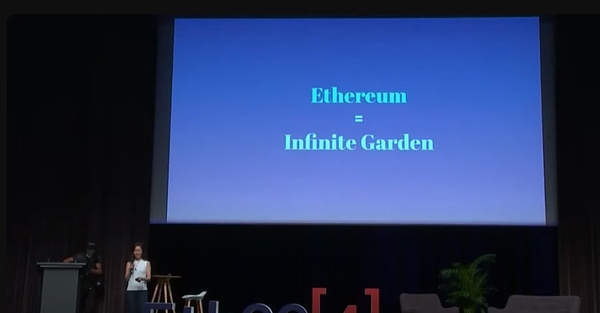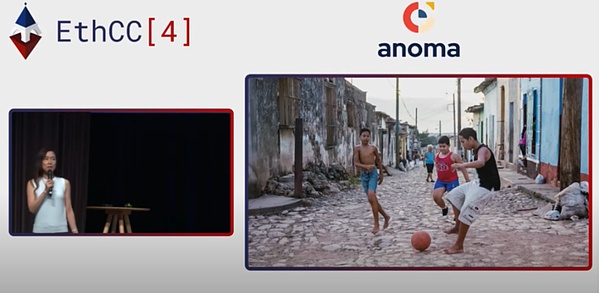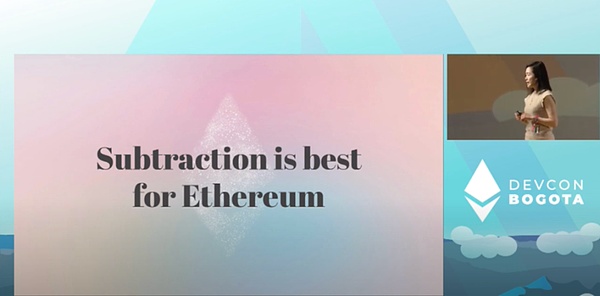Translation: Elsa
On September 18, 2024, the documentary "Vitalik: An Ethereum Story" was released. The original name of this documentary was "Ethereum: The Infinite Garden", which was derived from the concept of the Ethereum Foundation. However, since this film is an independent film (not produced by the Ethereum Foundation), in order to avoid confusion in the community, the team finally gave up the name with regret. So, what is the connection between the Ethereum Foundation and the "Infinite Garden"?
Main content
"Finite games are for the purpose of winning, while infinite games are for the purpose of continuing the game."——James P. Carse, "Finite and Infinite Games"
Competition and the desire for victory have always been deeply rooted in human nature, and we are obsessed with success and failure. In zero-sum games, there are always winners and losers, and the gains of the winners are accompanied by the losses of the losers, and the failure of the losers also makes us cherish our success more.
However, zero-sum games are a one-way growth method. People often think: "I must work harder and faster to surpass X and win X." In this model, development is driven by the desire to surpass others.
But imagine if there is no next game? This means that there is no clear final outcome, and there are no winners or losers in the traditional sense. We are just participants in the game. In this case, the logic of zero-sum games loses its meaning, and we no longer rely on the failure of others to prove our success.
In the end, we usher in a collaborative and open learning and working environment.
As Aya Miyaguchi, Executive Director of the Ethereum Foundation, explained in her 2021 EthCC speech "Growing the Infinite Garden - Ethereum"[4], this is exactly the vision of Ethereum, which she calls the "Infinite Garden".

Screenshot of Aya Miyaguchi's "Growing the Infinite Garden - Ethereum" speech
This concept was inspired by Finite and Infinite Games, a book by American scholar James P. Carse. In this book, there is a thought-provoking sentence: "The purpose of finite games is to win, while the purpose of infinite games is to continue the game."
James P. Carse shows us in this book that there are two different types of games in the world: finite games and infinite games. Finite games have clear rules, strict time limits and clear winning and losing standards, with winning as the ultimate goal. In this kind of game, the relationship between players is often antagonistic.
In contrast, in infinite games, there are no fixed rules and no clear time limits. The goal is not to win, but to bring more people into the game and keep the game going. In infinite games, the concept of players is cooperation, innovation and adaptation to changes.
In her speech, Aya Miyaguchi gave an example of children playing football on the street: these children were not forced by their parents, but because they really liked the sport. Some people did not wear shoes, some joined at any time, and some temporarily withdrew, but these did not affect their happy play. If a new player joins, they will pause the game and teach the new player. Because the better the new player performs, the more exciting the game will be, which is a good thing for everyone.

Aya Miyaguchi "Cultivating Infinite Gardens - Ethereum" Speech Video Screenshot
But when the goal becomes winning, the situation is completely different. Focusing on winning will disrupt your plans and strategies, disrupt your mind, and prevent you from fully engaging in the game. If you don't win in the end, you may be frustrated and lost.
Aya Miyaguchi believes that keeping Ethereum interesting is to let us remember the excitement of playing games together and continue the game. In the process of infinite games, finite games can appear, but finite games cannot contain infinite games. For example, the competition and debate within Ethereum are not for a certain player to win, but for the continuous improvement of Ethereum to make it more perfect.
The Ethereum ecosystem is like a vibrant garden in a natural environment. Here, we can play all kinds of games. The first gardener planted the first seed, and over time, trees and various plants grew one after another, making the garden full of vitality and diversity. This ecosystem is naturally evolved, not designed by a single individual or organization, but by a group of curious, enthusiastic and eager people who want to improve the garden.
What role does the Ethereum Foundation play in this infinite game?
The Ethereum Foundation's mission is to "cultivate an infinite garden". It compares itself to a "gardener", that is, focusing on cultivating and promoting the growth of the Ethereum ecosystem, rather than controlling it.
At the Ethereum Developer Conference Devcon 6 in October 2022, Aya Miyaguchi once again gave a speech on Ethereum's "Infinite Garden" titled "Executing with Subtraction in the Infinite Garden" [5], in which she elaborated on the role and function of the Ethereum Foundation (EF) in Ethereum's "Infinite Garden".
In the early days, the Ethereum Foundation was not a formal organization, but a group of developers and researchers. At that time, there was no financial team, no funding team, and the internal collaboration system of Ethereum was not perfect. When Aya Miyaguchi first took office, she faced two choices: one was to implement addition, that is, to build a powerful EF empire. This idea was completely possible at the time. It was not technically difficult to achieve, and the price of Ethereum was already quite good at the time; the other was subtraction, that is, to reduce power. In the end, the foundation chose "subtraction", and it transformed its role into a supporter of the entire ecosystem and supported this "infinite garden". Because Ethereum was already a huge open source community at the time, there were many things that needed to be improved. The Ethereum Foundation needed to focus on things that only it could do and that others would not do. This gave birth to the Ethereum Ecosystem Support Program (ESP) and some other funding programs. In addition, the Ethereum Foundation also gave priority to supporting as many third-party funding programs as possible, such as Gitcoin, Clr.fund, Protocol Guild, and MolochDAO. The support of the Ethereum Foundation is not limited to a specific team, but focuses on the long-term development and prosperity of the entire ecosystem.

Screenshot of Aya Miyaguchi's speech "Implementing Subtraction in the Infinite Garden"
The Ethereum Foundation knows that in order for this ecosystem to continue to prosper and grow, innovation and growth must be fostered through diversity and collaboration. Remember the Ethereum.org website? The maintenance and translation of this website is done by volunteers and developers from the Ethereum community. The translation of the website is thanks to about 5,000 volunteers from all over the world, who together have completed translations into up to 48 languages.
In Ethereum's collaborative system, although cooperation is advocated, it does not mean exclusion of competition. On the contrary, the Ethereum community encourages open participation and competition because it is all for the better improvement of Ethereum. Here, zero-sum games do not exist. The success of one person does not mean the failure of others, but the prosperity of the entire community.
In June 2024, Juan David, co-founder of Ethkipu.org, deeply interpreted the concept of "infinite garden" from the perspective of plant growth. In his article "Why Ethereum Evolves Like a Garden? ” (Why Ethereum Evolves Like a Garden?) [6] quotes a sentence from Italian botanist Stefano Mancuso in The Plant Kingdom: “The plant kingdom does not recognize animal hierarchies based on command centers and centralization, but rather cultivates a decentralized and decentralized plant democracy.” This sentence means that the plant kingdom does not rely on strict hierarchies or centralized models like the animal world. Plants in nature share and exchange resources through the “Wood Wide Web” to support each other.
Ethereum, like the plant world, relies on decentralization to achieve innovation and cooperation. Because of the diversity of the garden, Ethereum is able to accommodate different projects, such as embracing two different solutions: Optimistic Rollups and ZK-Rollups. Diverse approaches ensure Ethereum’s adaptability and sustainable growth.

Image source: https://typeshare.co/juandaveth/posts/why-ethereum-evolves-like-a-garden
Whether it is the infinite game concept emphasized by Aya Miyaguchi or the decentralized principle explained by Juan David from the perspective of plant growth wisdom, they all show us the unique charm of Ethereum. As time goes by and Ethereum continues to develop, our understanding of these concepts will become deeper, and everyone will become an active participant and witness in this process.
The "garden" of Ethereum welcomes everyone, allowing us to play and explore in it. This "garden" is open and infinite. In the Ethereum ecosystem full of possibilities, everyone can become a participant and guardian. It is precisely because of this open cooperation and decentralized nature that Ethereum's "garden" can achieve "infinity".
 Weatherly
Weatherly







